Neshan 44
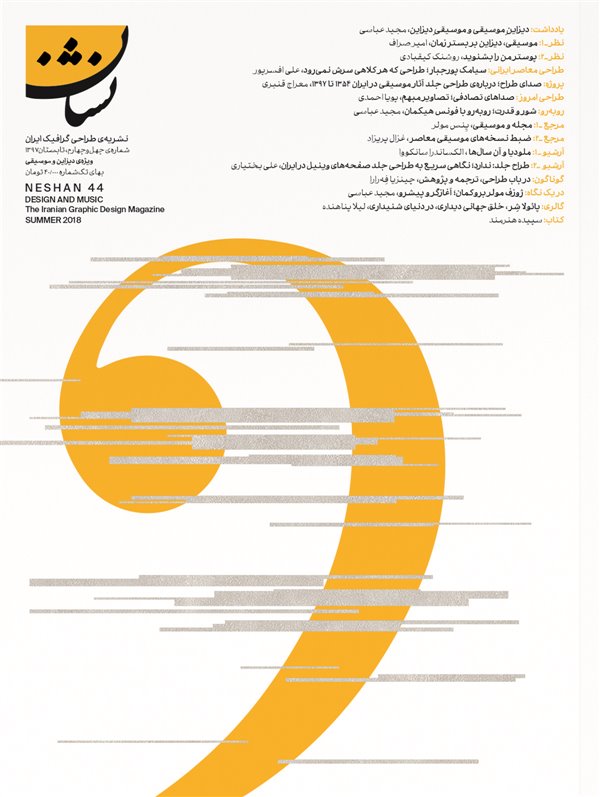
Archive-II
Cover Designer: N/A ;A Quick Glance At The Sleeve Design Of Vinyl Records In Iran Ali Bakhtiari
Ali Bakhtiari
Industrial production of music has been developed as one of the most money making entertainment industries since the late 1950s, with the introduction of vinyl records into the market. Vinyl records were produced and consumed in Iran from 1958 to 1974, and in 1975, this industry became extinct due to the introduction of cassette tape technology. Like many other industries, the review of design history for this issue has been divided into two sections: large-scale folk graphic creations and professional graphic designing at a limited scale.
During the period of producing the 78-rpm records (1905–1959), package design was of minor importance in the promotion of these products and was limited to the label of vinyl records and analogous packages for the production and distribution companies. The production of high-circulation vinyl and the modern technology of printing and new marketing techniques all contributed to the visual variation of vinyl sleeves. Vinyl records were produced in three sizes of 7, 10, and 12 inches at speeds of 33 and 45 rpm.
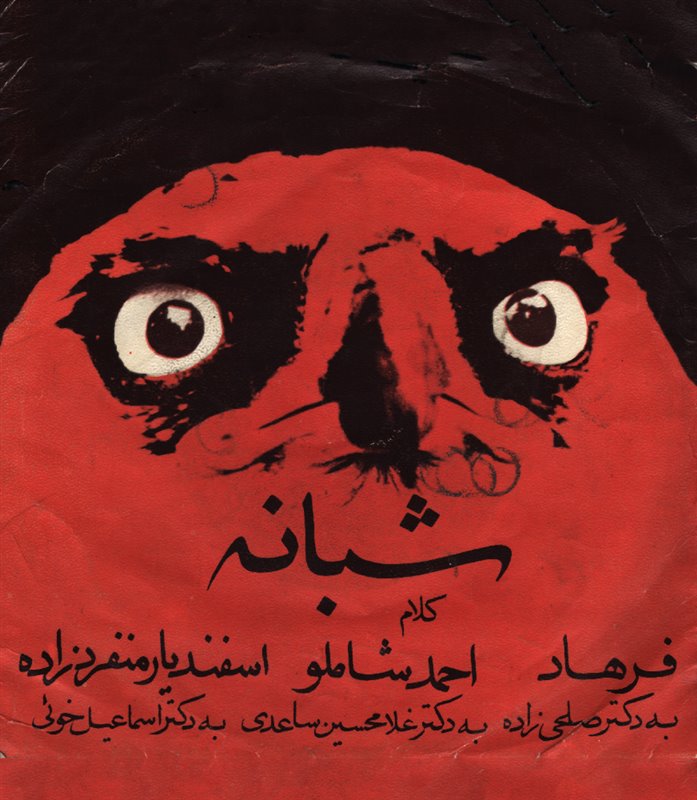 Farhad, Esfandiar Monfaredzadeh, Lavi, 1971
Farhad, Esfandiar Monfaredzadeh, Lavi, 1971
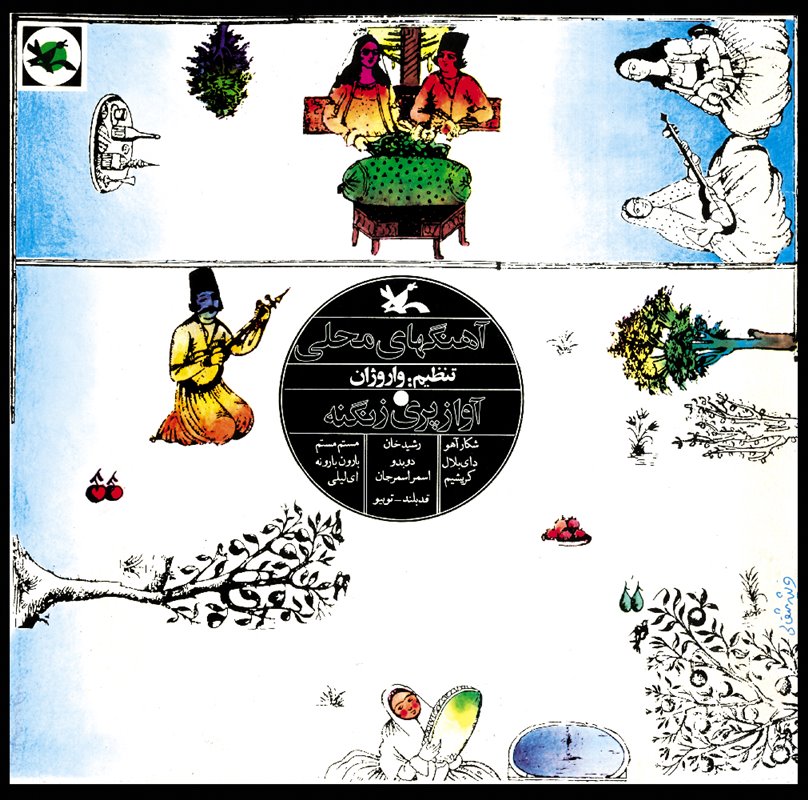 Folkloric Songs, Farshid Mesghali, Institute for Intellectual Development of Children and Young Adults, 1976
Folkloric Songs, Farshid Mesghali, Institute for Intellectual Development of Children and Young Adults, 1976
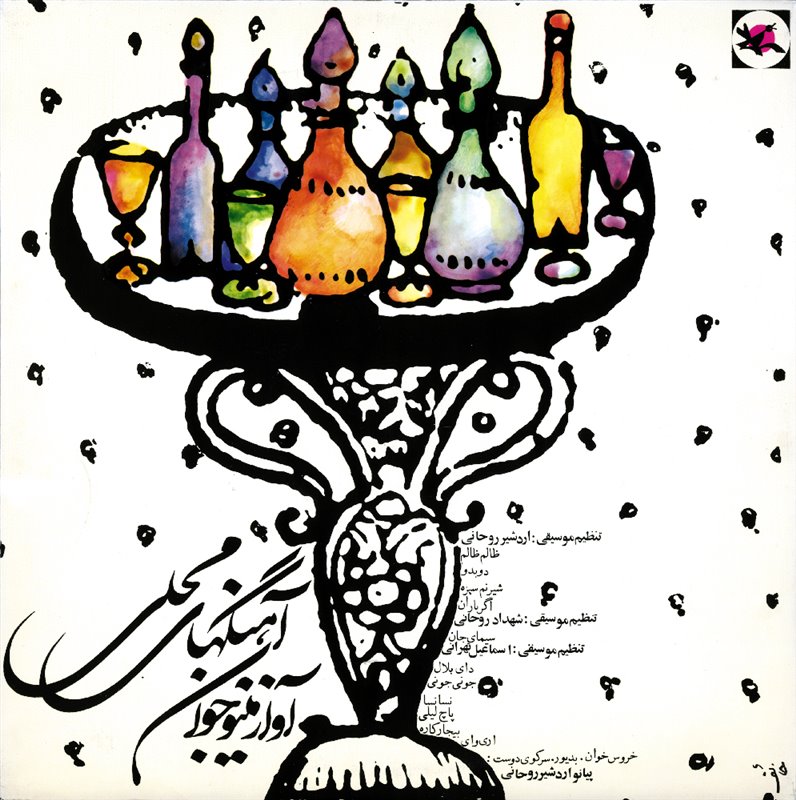 Folkloric Songs, Bahram Khaef, Institute for Intellectual Development of Children and Young Adults, 1976
Folkloric Songs, Bahram Khaef, Institute for Intellectual Development of Children and Young Adults, 1976
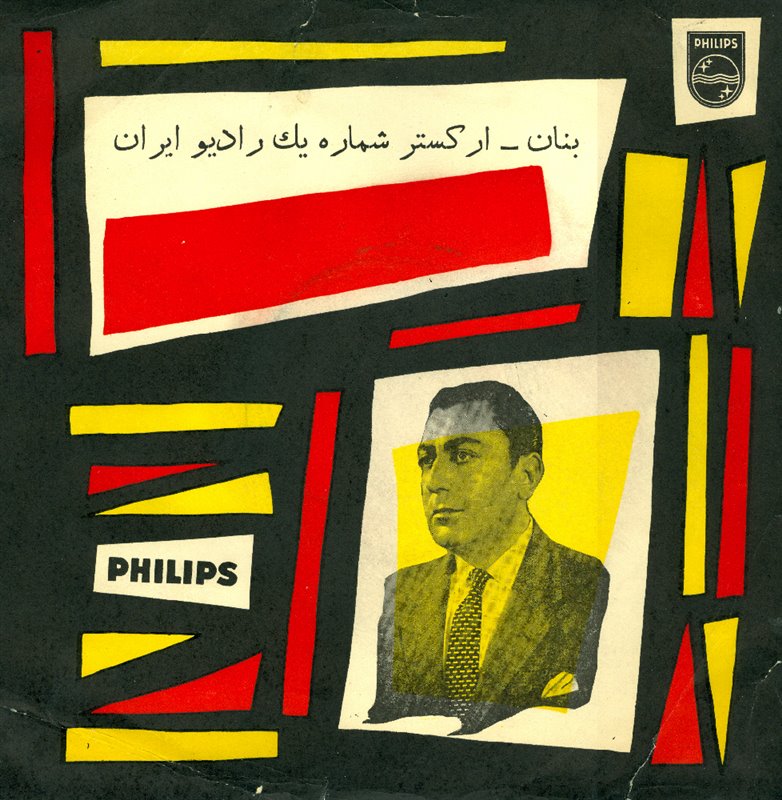 Banan, Designer Unknown, Philips, 1950s
Banan, Designer Unknown, Philips, 1950s
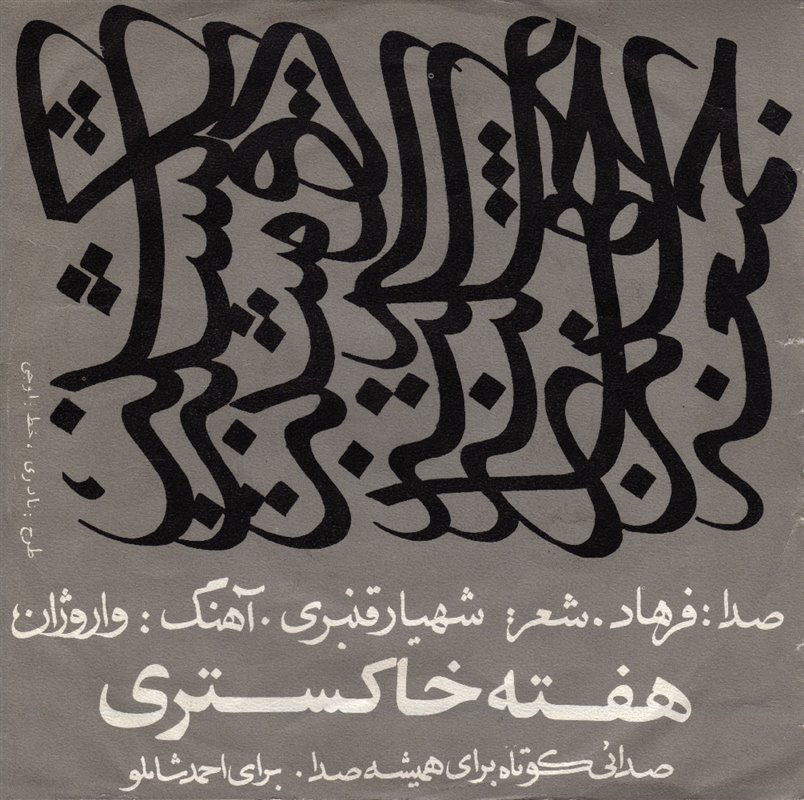 Farhad, Design by Naderi, Caligraphy by Owji, Royal,1973
Farhad, Design by Naderi, Caligraphy by Owji, Royal,1973
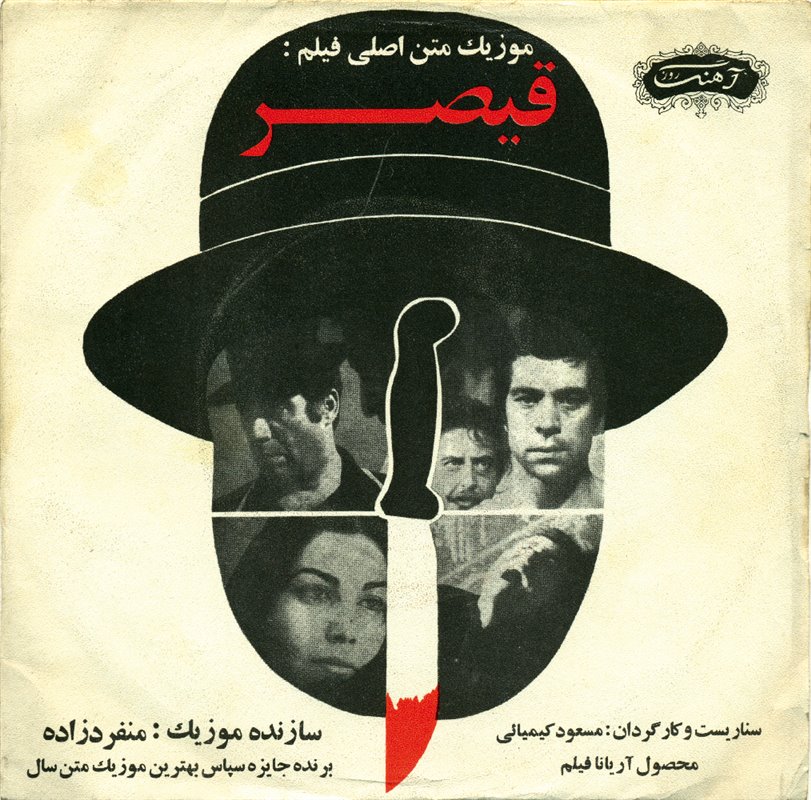 Gheysar Sound Track, Abbas Kiarostami, Ahang Rooz,1969
Gheysar Sound Track, Abbas Kiarostami, Ahang Rooz,1969
In the iconography of the dominant structure for Iranian vinyl record sleeves, close-up portraits, or medium shots of the singer along with song information, the name of the singer, and the logo of the production company were the main pictorial elements of the covers. This representation system was perfectly constructed based on the cinematic representation system in its graphics products based on the star system, and the star would carry the industry’s social and economic development. The striking feature was the hierarchy of stars in production which can be divided into two local (vinyl records for towns, minority, or children), and national (pop and soundtracks’ stars) categories. This iconography on film’s soundtrack vinyl records was featured by presenting an image of the movie or a part of the film’s poster, alongside information about the songs and the name of the film. The singer’s image was occasionally used when he/she received more public attention compared to the movie stars. Most Iranian vinyl sleeves were designed and produced without the help of professional graphic designers, without signatures, using photographs in lithographic and printing houses. There were very limited covers with designs made by graphic designers. An interesting feature of these covers was Naive and Kitsch typography for song titles and singers’ names.
The first 7-inch and 12-inch Iranian vinyl records were recorded in Iran by the «Ahang Company» (later renamed «Ahang Rooz») and were duplicated in Germany. The 7-inch collection had a uniform sleeve background with linear patterns of white musical instruments on the blue background and two dynamic frames on both sides of the package in order to add the singers’ image and song information. Of course, there were some designs from Mohammad Bahrami for the sleeves. In the 1960s, «Ahang Rooz» began firstly with a simple two-color uniform with a single colored cover and a black and white singer’s portrait in the middle. Gradually, this cover was removed and the images of the singers were printed in different places with four colors on the sleeve. In the late 1950s, Philips and ABC companies also provided a number of Persian vinyl records that were distinguished for their design quality (both companies produced and printed products from outside Iran) from products designed in Iran.
Another important company in the late 1950s was the «Royal Company». They proposed the design method for their sleeve image, which had set a new standard for vinyl cover designs for almost two decades. Royal vinyl records, except for a few samples, have been designed and produced based on the location of the singer’s portrait at the center of the cover. Royal has always continued this way without any graphic or design complexity.
With the boom of the music production industry since the mid-1960s and increased production of the vinyl records, small companies in Tehran and other cities began to produce music, but none of these products had significant graphical overlap with professional graphic design, despite their unique aesthetic features. With the emergence of new phenomena in the field of music in the mid-1960s, such as the Iranian Bit bands and Slow Rock and Alternative Music, the cover has become a reflection of the music genre difference compared with the pop music. For the sleeve of the Bit bands’ records, an image of the band (which usually have their own style and fashion) may grab the attention of the audience. Vinyl records of Alternative singers such as Kourosh Yaghmaei, Fereydoon Foroughi, Farhad, and Dariush also had different aesthetics from the mainstream vinyl records of the pop music (whether in terms of design or the stars). Esfandiar Monfaredzadeh was one of the few composers who cared about the cover of his records, and he himself has designed several covers, such as “Shabane” and “Tangna”.
The vinyl records of movie soundtracks were one of the most important parts of the records production industry in Iran, which dates back to 78 rpm days. Due to the popularity of the cinema and the lack of television, the only memorabilia after seeing movies were posters and movie photos, printed lyrics, and song or soundtracks records. The sales volume of these records was so high that the songs and music of many movies were published by several different companies. The pictorial structure of these records’ sleeves was based on a picture of the movie with the presence of the male and female stars, part of the film’s poster, and in some cases a picture of the song’s singer, but the cover of Qaisar designed by Abbas Kiarostami and Reza Motori designed by Tofigh Momtaz and Esfandiar Monfaredzadeh, and Mah-Pishooni illustrated by Esfandiar Ahmadiyah were the first movie vinyl records produced according to professional graphics.
The Music Production Center of the Institute for the Intellectual Development of Children and Young Adults was the first place which formed the relationship between records production and graphic designers due to the existence of a graphics studio in the center. These products were in multiple categories of the voice for teens, the voice of the poet, life and works and tales, each with aesthetic features related to the type of the music provided by the records. The sleeve of the story records was very innovative for the pop-up designs. Additionally, considering the products of the Ministry of Culture and Art, despite lacking the designer’s signature, their attractive graphics features suggested a graphics studio behind that.
Advertising vinyl was the other genre of graphics products, depending on the product type, the graphic identity of the producer played a crucial role in which. During the entire period of vinyl records production, in addition to the cover for each product, a number of records were also produced without a cover, in which case factories and shops used their uniform packages to offer these products.
As the cassette tape replaced and stopped vinyl production, the cassette cover design also went through the same general designing trend as the vinyl records’ cover focusing on the singer’s face, and the trend has not changed much until the digital age.
Ali Bakhtiari
is a Tehran based curator focused on cultural studies and modern and contemporary art. He collaborated with many international museums and centers such as Tehran Museum of Contemporary Art, British Museum, Museo MAXXI and Centre Georges Pompidou. He founded ABBookness project in 2011 which is the first Middle Eastern project collaborating with artist on publication of Artist Books. ABBookness already publishe d works of artists such as Farideh Lashai, Parviz Tanavoli, Parvaneh Etemadi and Ali Akbar Sadeghi.
alibakhtiari85@gmail.com
Design for Music, Music for Design
Majid Abbasi
> more
Opinion-I
Music: Design Within The Context Of Time
Amir Sarraf
> more
Opinion-II
Listen To My Poster
Roshanak Keyghobadi
> more
Iranian Contemporary Design
Why Is A Raven Like A Writing Desk?
Ali Afsarpour
> more
Project
The Designer’s Voice, On Designing Record Covers In Iran, 1975 To 2018
Meraj Ghanbari
> more
Design Today
Indeterminate Sounds; Indefinite Images
Pouya Ahmadi
> more
Face to Face
Power And Passion; Face To Face With Fons Hickmann
Majid Abbasi
> more
Reference-I
The Magazine And The Music
Jens Mueller
> more
Reference-II
Edition Of Contemporary Music
Gazelle Parizad
> more
Archive-I
Melodiya Of Those Years
Alexandra Sankova
> more
Different
Of Designing, Of Translating, Of Searching
Cinzia Ferrara
> more
Overview
Josef Müller-Brockmann; Initiator And Pioneer
Majid Abbasi
> more